Moya has some cultural and natural sights which are well worth visiting. The archaeological sites Cueva de Doramas or those of the Montañeta are the most outstanding.
Besides, a walk through Moya cannot overlook such emblematic buildings as the Church of Nuestra Señora de la Candelaria, the Museum-house of Tomás Morales, the Heredad de Aguas or the Shrine of San Bartolomé de Fontanales.
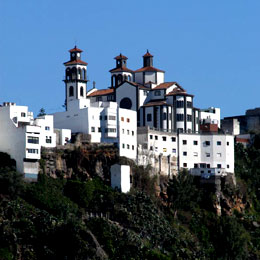
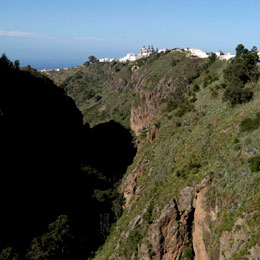
The Church of Nuestra Señora de la Candelaria hangs over the cliff which drops sheerly down to the Barranco de Moya. Opened in 1957, it is divided into three naves, with two adjoining towers and an outstanding feature is the rose window on the main façade.
Opposite the church is the house where the poet Tomás Morales was born in 1884. In the Museum-house there is an extensive collection of material about the poet, a library and a collection of pictures relating to his life as the main representative of Spanish Modernism.

The building of the Heredad de Aguas, constructed in basalt, is another outstanding feature. It consists of two floors and a symmetrical façade and it has a central belfry with a clock in the bell-tower. The six neo-classic columns on the façade are worth noting. They support a cornice which crowns the second floor.
The Ermita de Fontanales is one of the most interesting examples of popular religious architecture. It was built in 1872 and dedicated to San Bartolomé. The image of the patron saint is conserved nowadays in the new church and is the work of the sculptor José Luján Pérez (1753 – 1815).
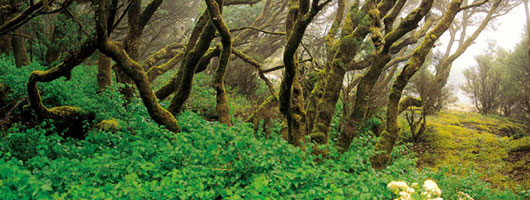
If the visit, however, extends beyond the village itself to the natural surroundings, Moya offers one of the best opportunities to appreciate rural constructions such as traditional houses with gabled roofs and Arab or French tiles, terraces for growing crops, threshing floors or water structures such as irrigation channels, canals, aqueducts, cantoneras (stone structures for irrigation) or mills.
Sixty five per cent of the municipality is classed as a Protected Natural Area. In the Parque Rural de Doramas is the Special Natural Reserve of Los Tiles, one of the last redoubts of laurisilva on the island and whose name originates from the abundance of the Til (Ocotea Foetens). It is a compulsory visit for the many botanists who come to Gran Canaria to witness the spectacular nature and variety of the flora and fauna and the large number of endemic species which are of great scientific interest.
On the coastline of Moya, which covers 4.22 kilometres, are the beaches of La Caleta in the Altillo and the natural pools of clear waters of the Charco San Lorenzo, suitable for bathing during most of the year. It is at the Playa de La Caleta, which is used by surfers from all over the island throughout the year, due to its excellent conditions, that the International Longboard Festival is held every year at the beginning of November, attracting sports people of many different nationalities.
The Villa de Moya has become one of the main places on Gran Canaria with a tradition for handicraft. The visitor has a range of handicrafts at his/her disposal. Craftsmen open their workshops nearly every day to sell their products.

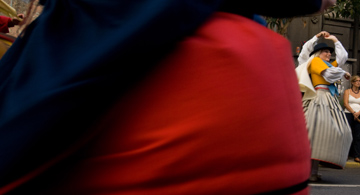
The most outstanding items are basketware made of cane and palm, the making of traditional costumes, embroidery, traditional Canarian musical instruments such as the timple (a kind of small guitar typical of the Canary Islands) and numerous articles made in wood, skin or iron.
Apart from these traditional handicrafts, there is a range of new items like soaps and perfumes made from natural products of the area.
The cuisine typical of Moya guarantees all its visitors a variety of dishes which, according to the particular area, include meat or fish as the main ingredient.
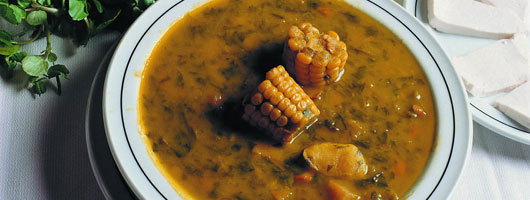
In Fontanales, which is a stockbreeding area, steaming hot dishes are served to residents and visitors alike, the most popular of which are the potajes or stews in which the yam is always one of the ingredients and the charcoal-grilled meats (especially goat and beef) well prepared with delicious sauces. Products such as the cheeses of the medianías and the higher areas of the municipality are well known for their variety and the care taken in their preparation.
However, the restaurants of the coastal areas specialise in fish. The variety of species caught in the area mean that the visitor can enjoy grills of all types of fish, both white and blue.
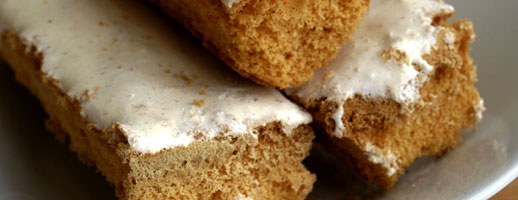
But what Moya is really famous for is its confectionery. As well as the industries producing homemade glazed bizcochos and suspiros (meringues) for which Moya is well known, there is also the making of lemon roscos (a type of small doughnut), bollos de anís (small aniseed buns) and truchas (a sort of pastry with a sweet pumpkin filling), all of which have also become very popular throughout the archipelago. Every Sunday the market opens to offer the very best of the local products.